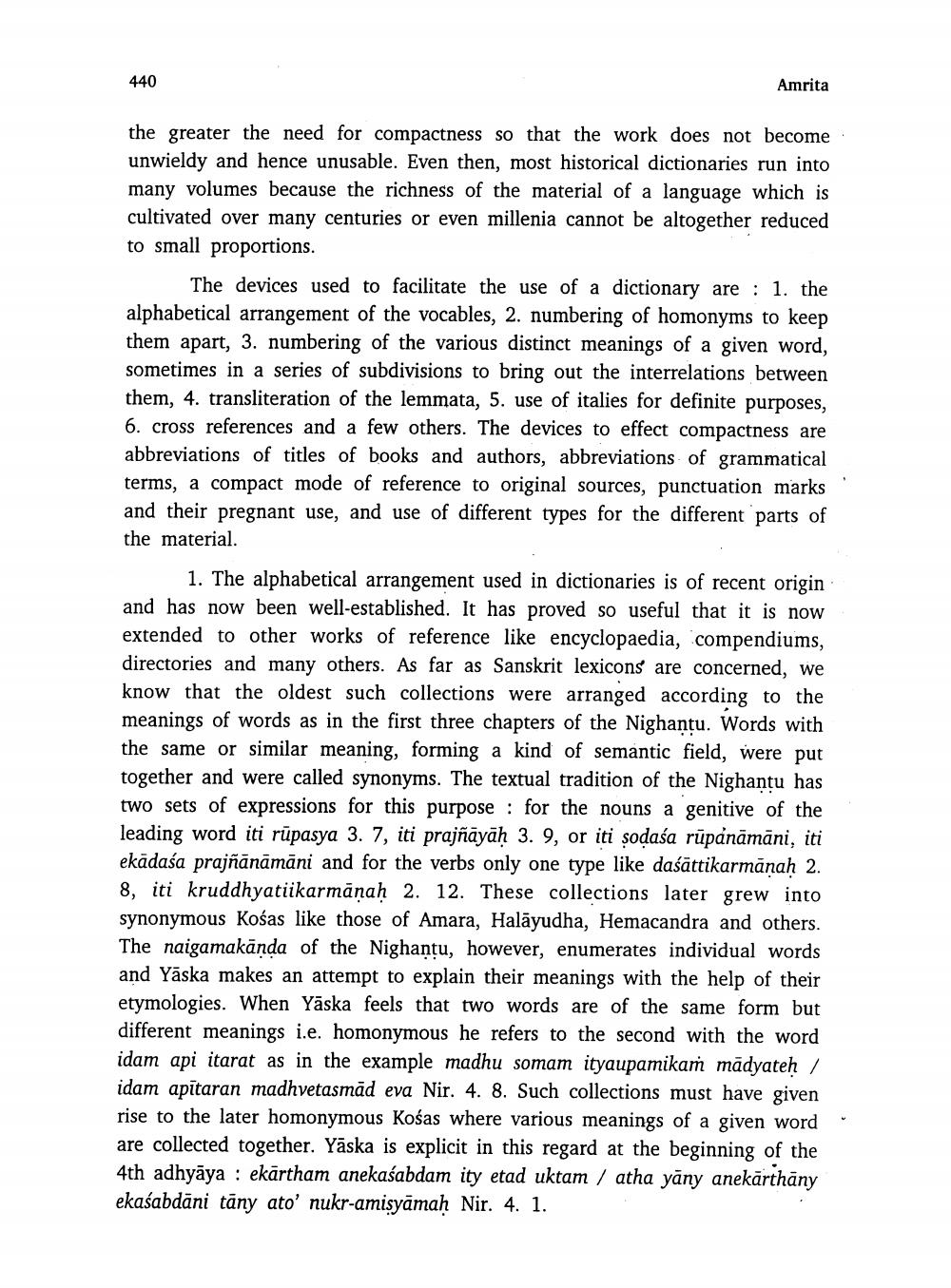________________
440
Amrita
the greater the need for compactness so that the work does not become unwieldy and hence unusable. Even then, most historical dictionaries run into many volumes because the richness of the material of a language which is cultivated over many centuries or even millenia cannot be altogether reduced to small proportions.
The devices used to facilitate the use of a dictionary are: 1. the alphabetical arrangement of the vocables, 2. numbering of homonyms to keep them apart, 3. numbering of the various distinct meanings of a given word, sometimes in a series of subdivisions to bring out the interrelations between them, 4. transliteration of the lemmata, 5. use of italies for definite purposes, 6. cross references and a few others. The devices to effect compactness are abbreviations of titles of books and authors, abbreviations of grammatical terms, a compact mode of reference to original sources, punctuation marks and their pregnant use, and use of different types for the different parts of the material.
1. The alphabetical arrangement used in dictionaries is of recent origin and has now been well-established. It has proved so useful that it is now extended to other works of reference like encyclopaedia, compendiums, directories and many others. As far as Sanskrit lexicons are concerned, we know that the oldest such collections were arranged according to the meanings of words as in the first three chapters of the Nighantu. Words with the same or similar meaning, forming a kind of semantic field, were put together and were called synonyms. The textual tradition of the Nighantu has two sets of expressions for this purpose : for the nouns a genitive of the leading word iti rūpasya 3. 7, iti prajñāyāḥ 3. 9, or iti sodaśa rūpánāmāni, iti ekādaśa prajñānāmāni and for the verbs only one type like daśāttikarmanaḥ 2. 8, iti kruddhyatiikarmāṇaḥ 2. 12. These collections later grew into synonymous Kośas like those of Amara, Halāyudha, Hemacandra and others. The naigamakānda of the Nighantu, however, enumerates individual words and Yāska makes an attempt to explain their meanings with the help of their etymologies. When Yāska feels that two words are of the same form but different meanings i.e. homonymous he refers to the second with the word idam api itarat as in the example madhu somam ityaupamikam madyateh / idam apītaran madhvetasmad eva Nir. 4. 8. Such collections must have given rise to the later homonymous Kośas where various meanings of a given word are collected together. Yāska is explicit in this regard at the beginning of the 4th adhyāya : ekārtham anekaśabdam ity etad uktam / atha yāny anekārthany ekaśabdāni tāny ato' nukr-amisyāmah Nir. 4. 1.




